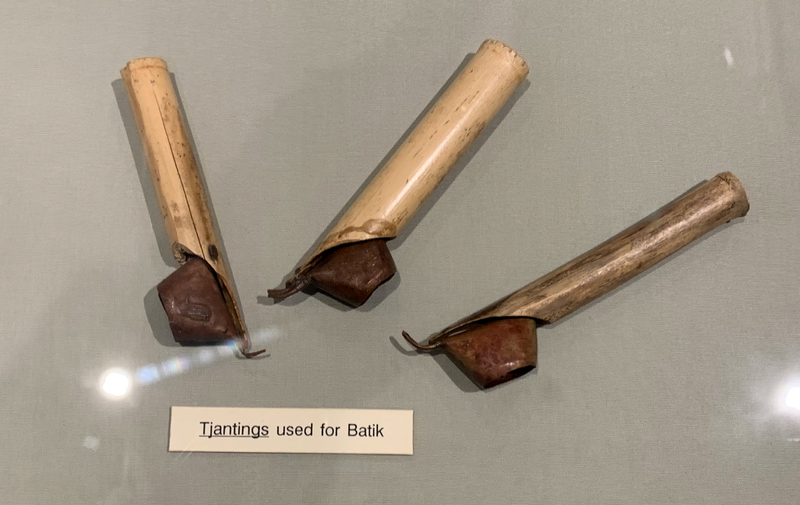Tjanting
CREATING PATTERN
Batik patterns traditionally are created with a Tjanting (hand tool) or Tjap (stamp).
Tjanting (hand tool) is a pen-like hand tool with a brass bowl with a spout used for drawing with wax on fabric. The bowl is heated to allow warm wax to flow while creating lines and dots.
Tjap (stamp) (pronounced "chop") is made of copper strips bent into the shape of the design plate and include smaller pieces of wire to create the dotted parts of the motifs. Developed in the mid-19th-century, tjaps have not changed much today. The tjap carries hot wax to the fabric. The wax encases the fibers in the fabric to create a resist that keeps the dye from penetrating into the fabric when submerged in a dye bath. Ideally a tjap is made so both sides of the fabric can be stamped symmetrically with wax. The asymmetrical nature of this tjap to the right suggests that a portion of the stamp was broken off from a larger, more symmetrical design. The process of applying wax with the tjap may be repeated multiple times, creating different wax resist areas for separate dye baths and a more complex overall design. These two tjaps illustrate a more open, organic motif (on the right) and a more condensed motif (on the left), both common in Batik design.
— Written by Charlene Gross (School of Theatre)
Tjap (Batik stamp), mid-1900s
Copper, additional metals, and rubber
PSU14:25 and PSU15:26, Gifts of Louisa and James McDivitt, 1967
On loan from the Matson Museum of Anthropology
Tjantings on loan from the Center for Virtual/Material Studies



